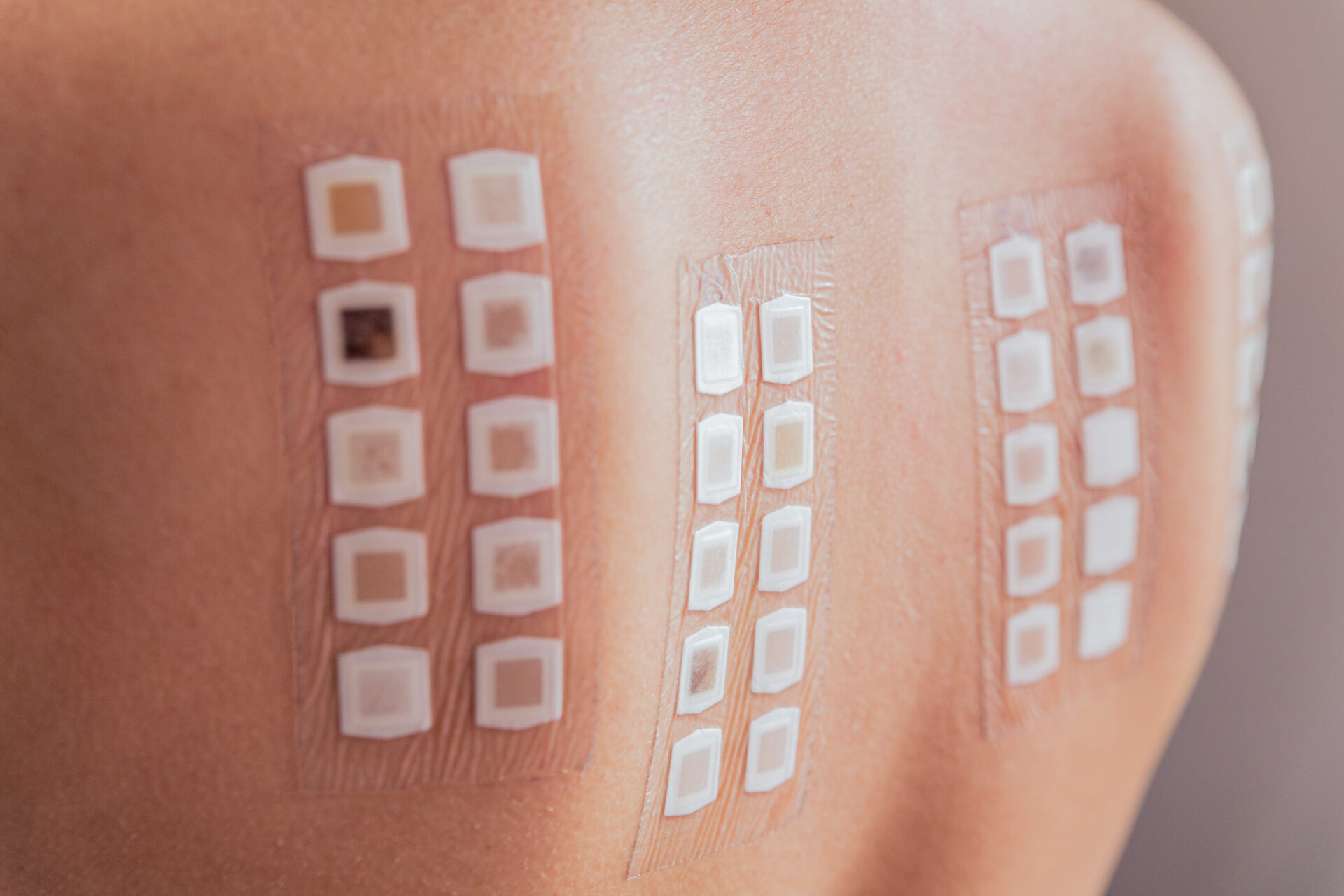Skin patch testing is a reliable method for diagnosing contact allergies and identifying which substances are causing the reaction. Here’s what you need to know about skin patch testing and how it can help you manage your allergies.
What is Skin Patch Testing?
Skin patch testing is a procedure that helps diagnose allergic contact dermatitis, or skin inflammation that occurs when some people come in contact with ingredients (haptens) to which they are individually sensitive. These ingredients can be found in topical medications, cosmetics, cosmeceuticals, soaps, and more. During the skin patch test, small amounts of suspected allergens are applied to your skin in adhesive patches, which are left on your skin (usually back) for two days. Your doctor will then inspect the area after 48 hours and 96 hours to look for signs of irritation or inflammation, such as redness, bumps, or blistering. Some allergens require a delayed read at 120 hours.
Understanding Your Results
If you have an allergic reaction during the test period, it will usually show up within 48 hours but may take up to 120 hours for a reaction to appear. The severity of your reaction is proportionate to the severity of the allergy, and some other reaction may occur which are not an indication of a contact allergy (ie. irritant reaction, poral reaction, etc.) It is important to note that if no reaction occurs during this time period, it does not necessarily mean that you do not have an allergy; other allergens were simply not tested during this particular session and further testing may be required.
Managing Your Allergies With Skin Patch Testing
Once you know what causes your allergic reactions, it becomes much easier to manage them and avoid future flare-ups. For example, if you’re allergic to latex gloves used in medical procedures, you can request gloves made from another material such as vinyl or nitrile when visiting a doctor’s office or hospital setting. Knowing what ingredients trigger your allergies also makes it easier to identify allergens on the labels of personal care items so that you can avoid buying products with those ingredients in them altogether. Often a cross reactor list is also provided with a list of safe products from the CAMP database to make this process more user friendly.
All in all, skin patch testing is an effective method for diagnosing allergies and may help you understand what is triggering your symptoms. If you think you may be having an allergic reaction due to contact with certain materials or substances, talk with your doctor about whether skin patch testing may be right for you!






